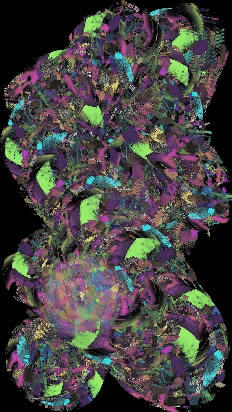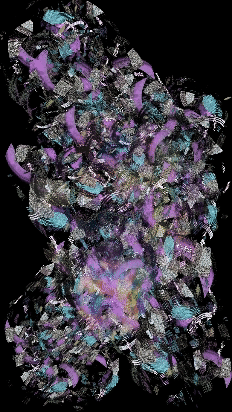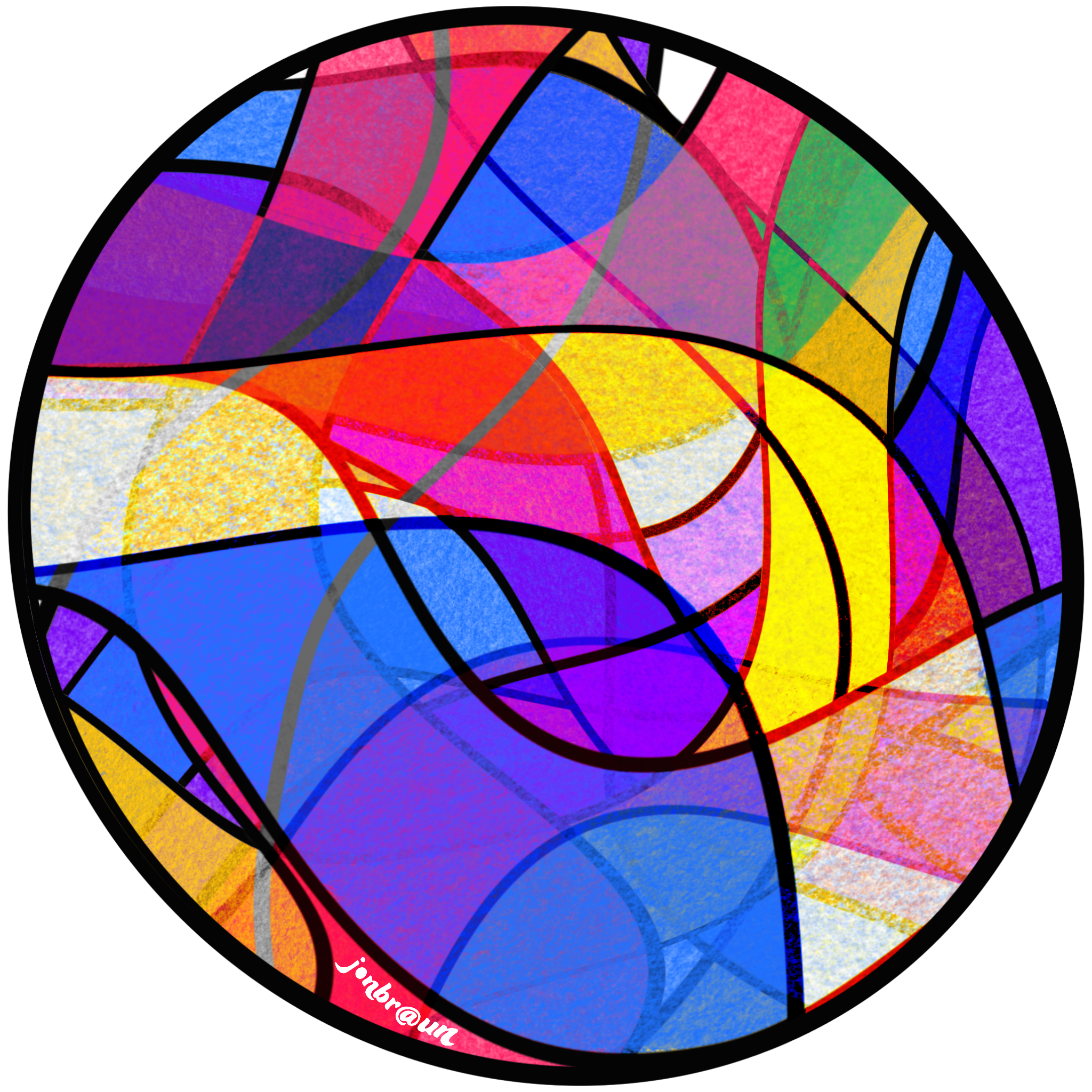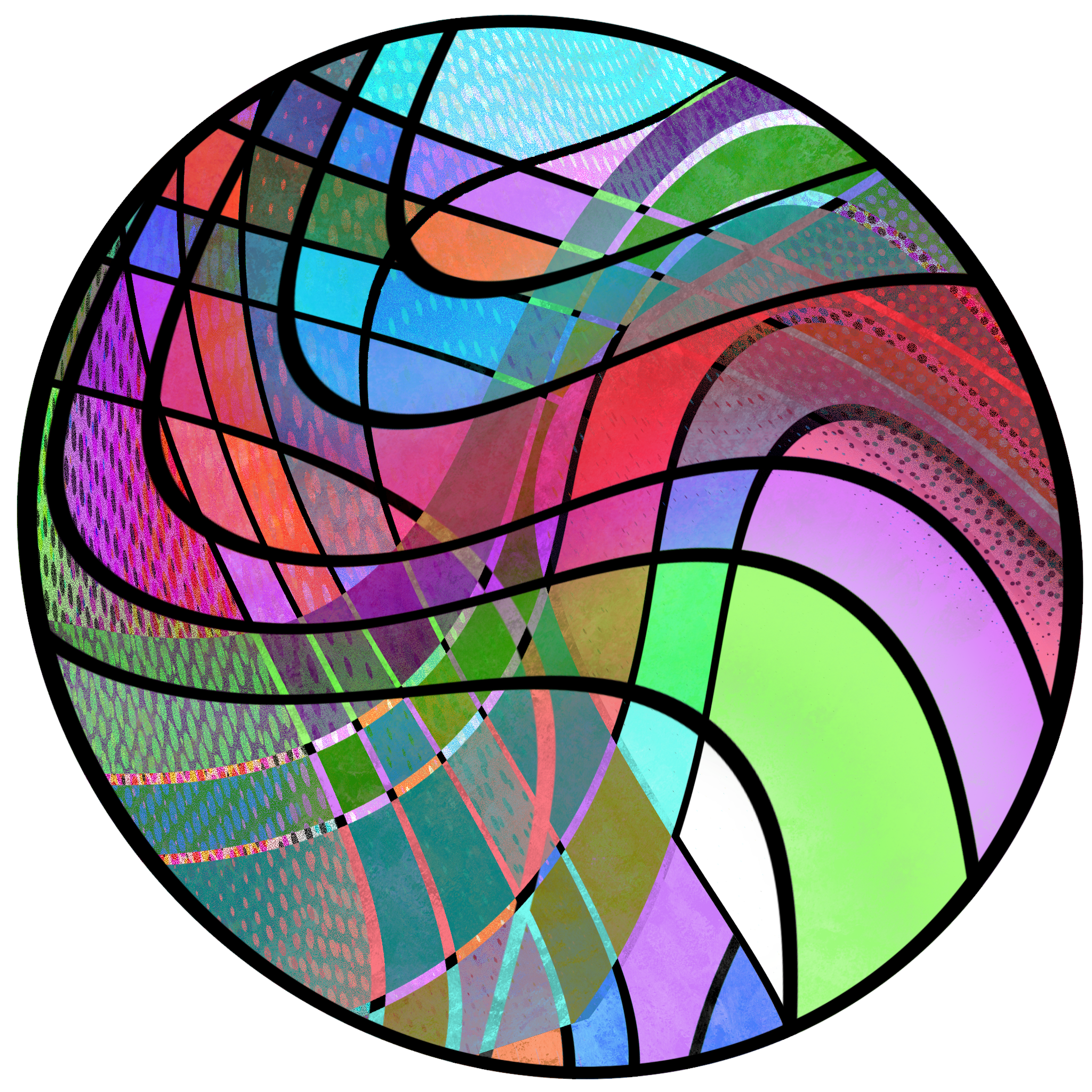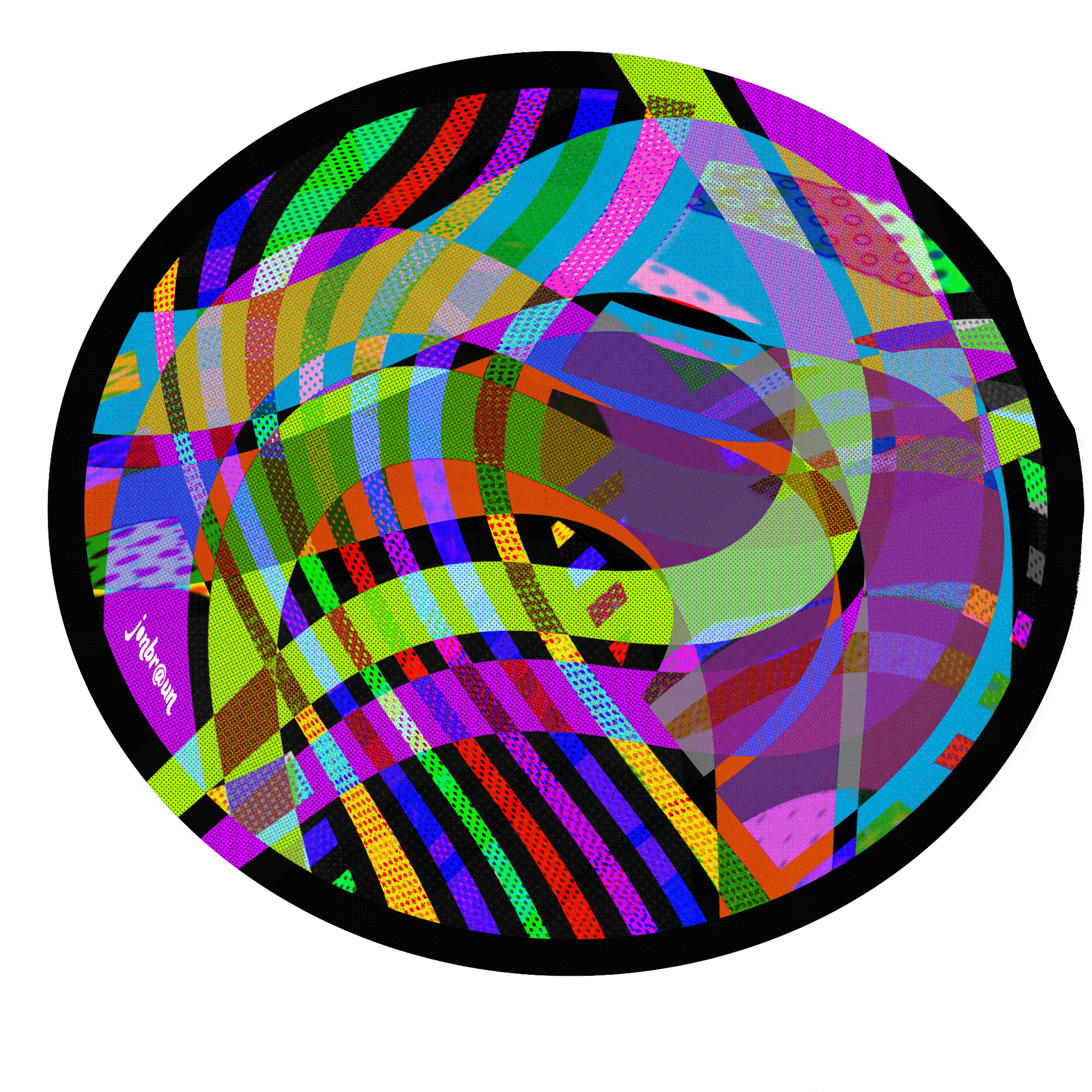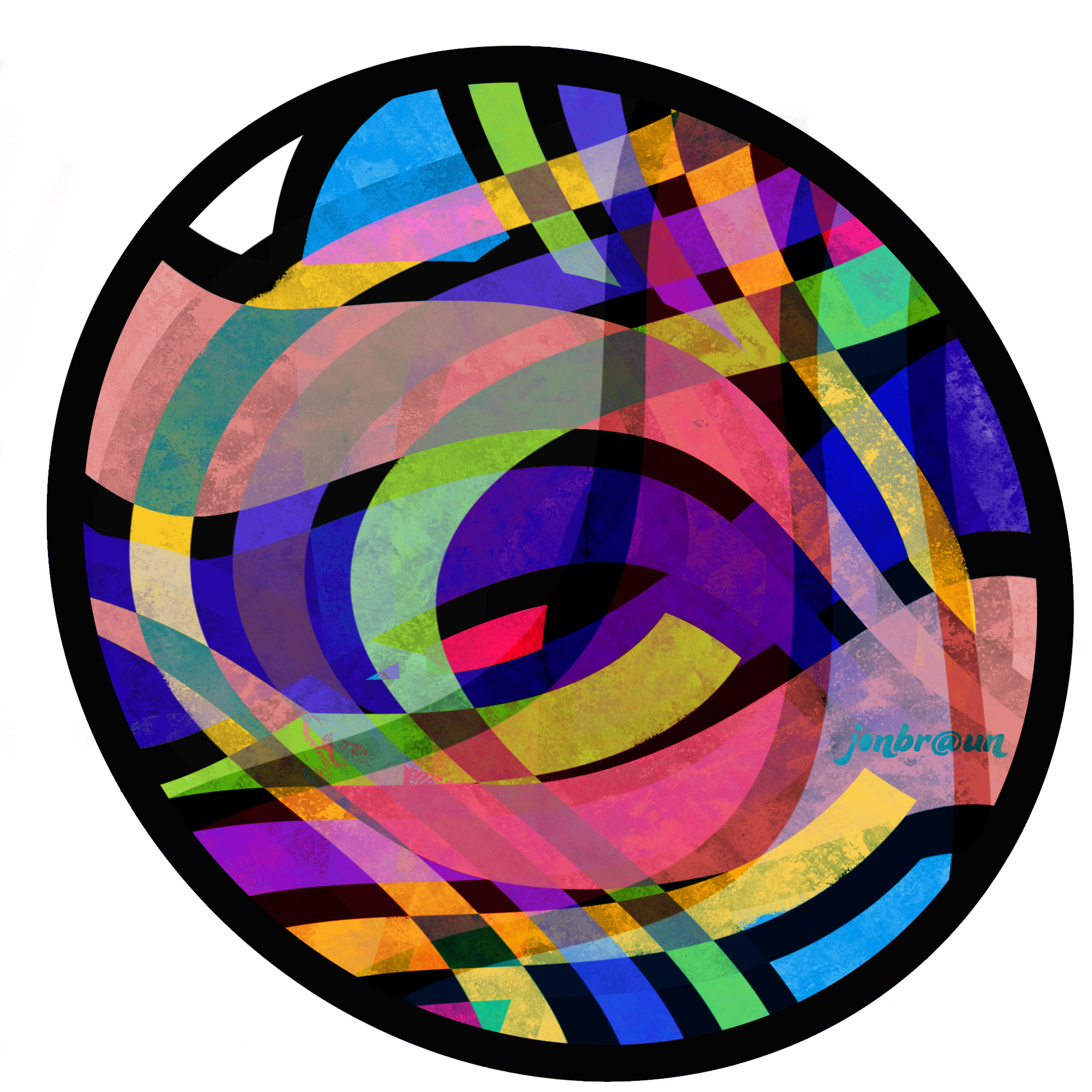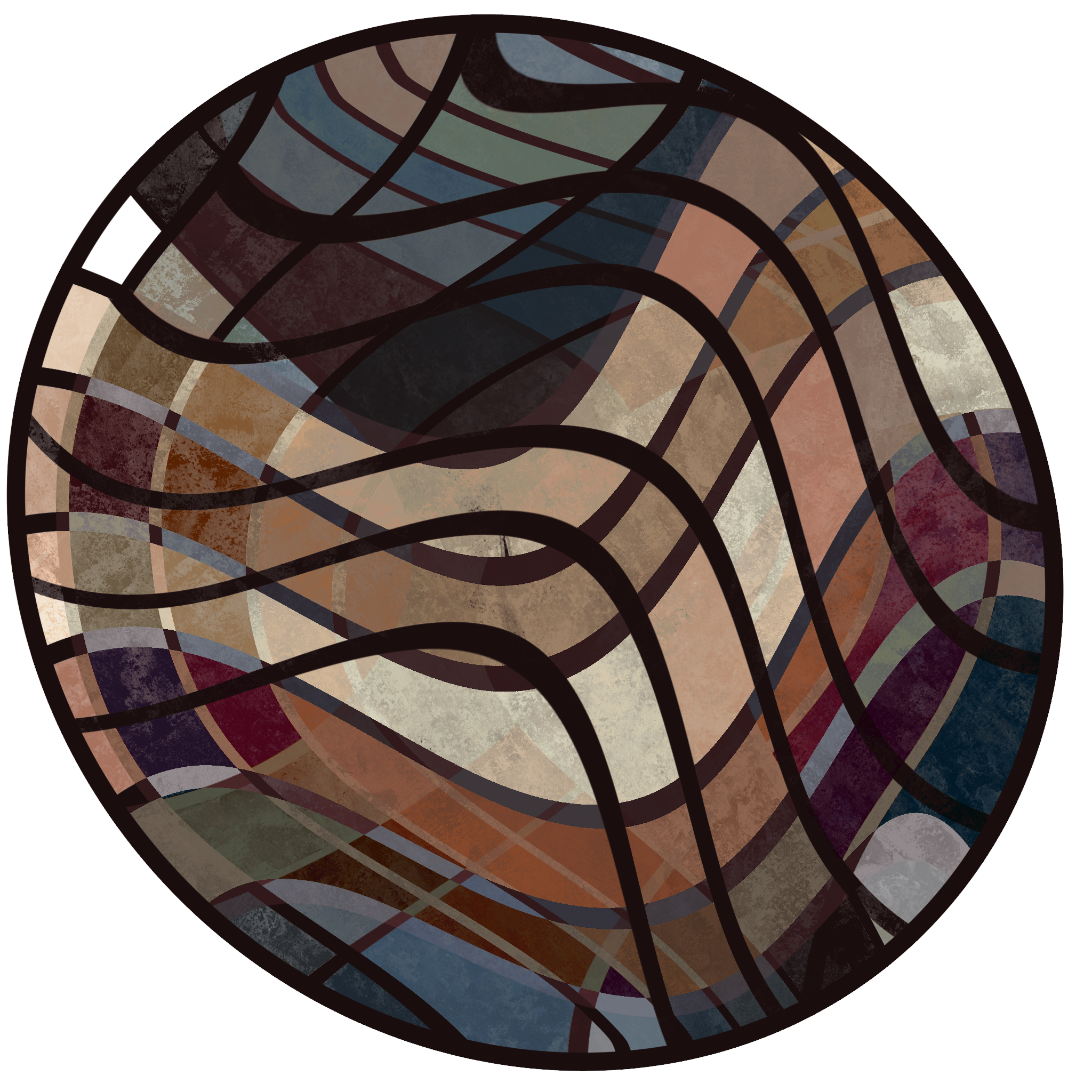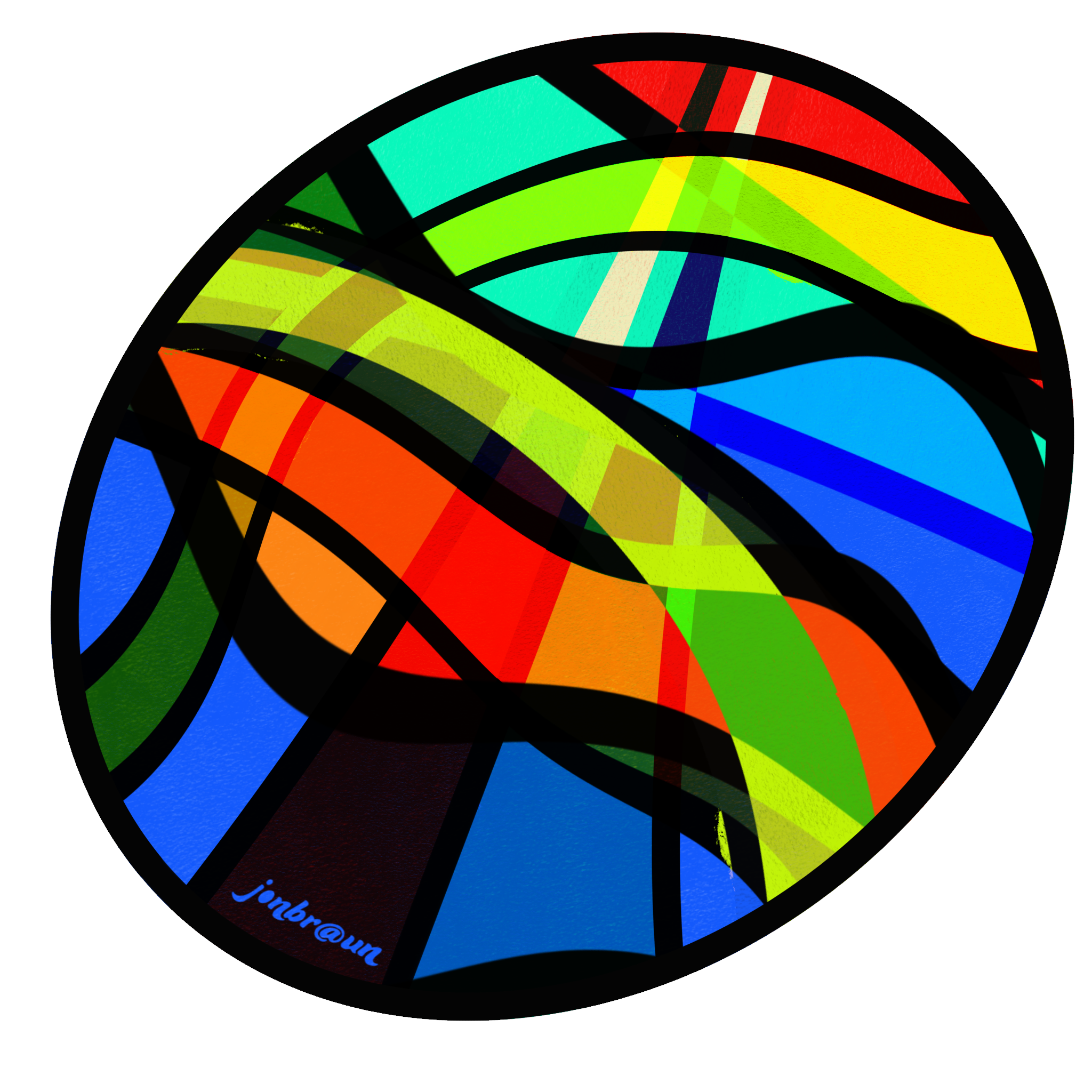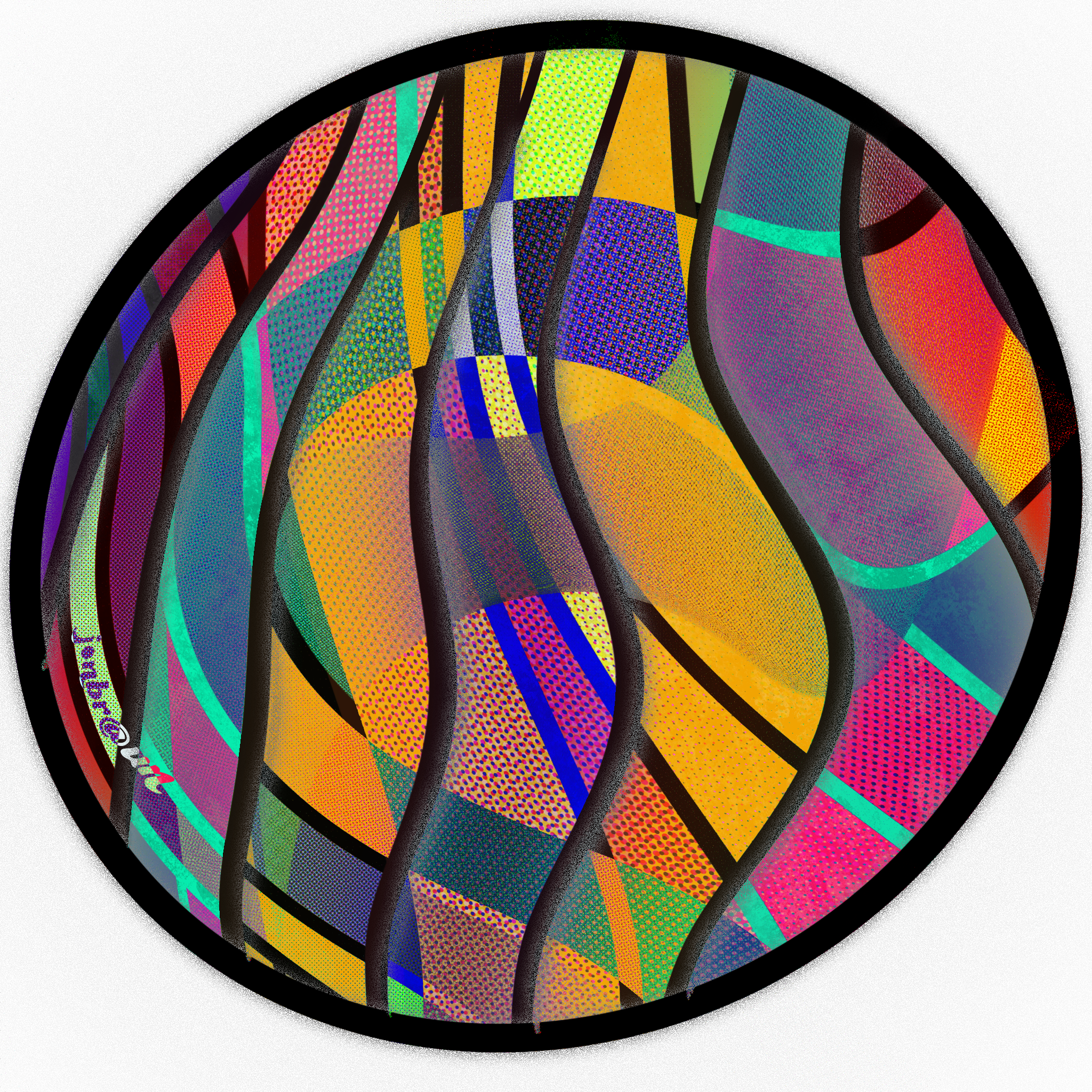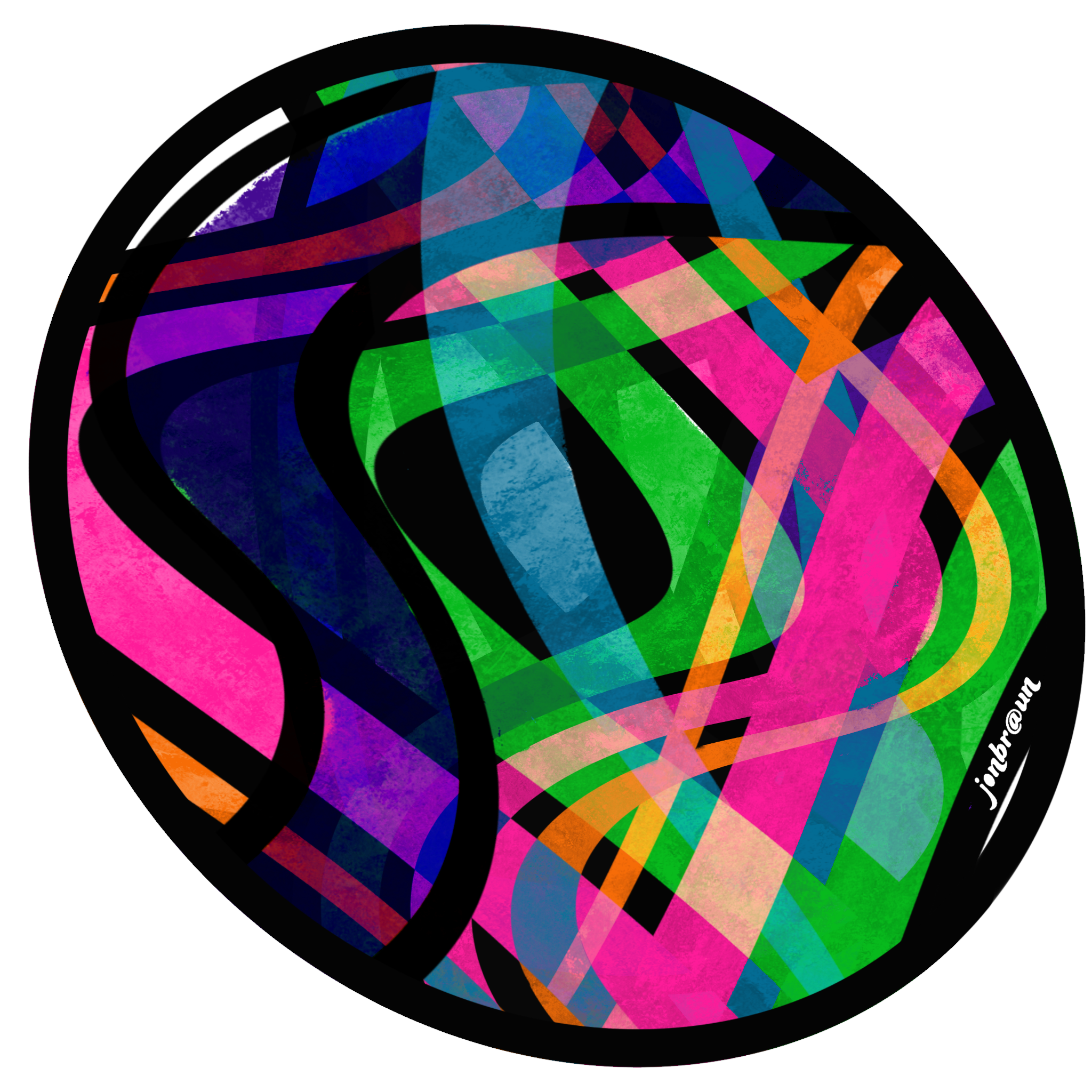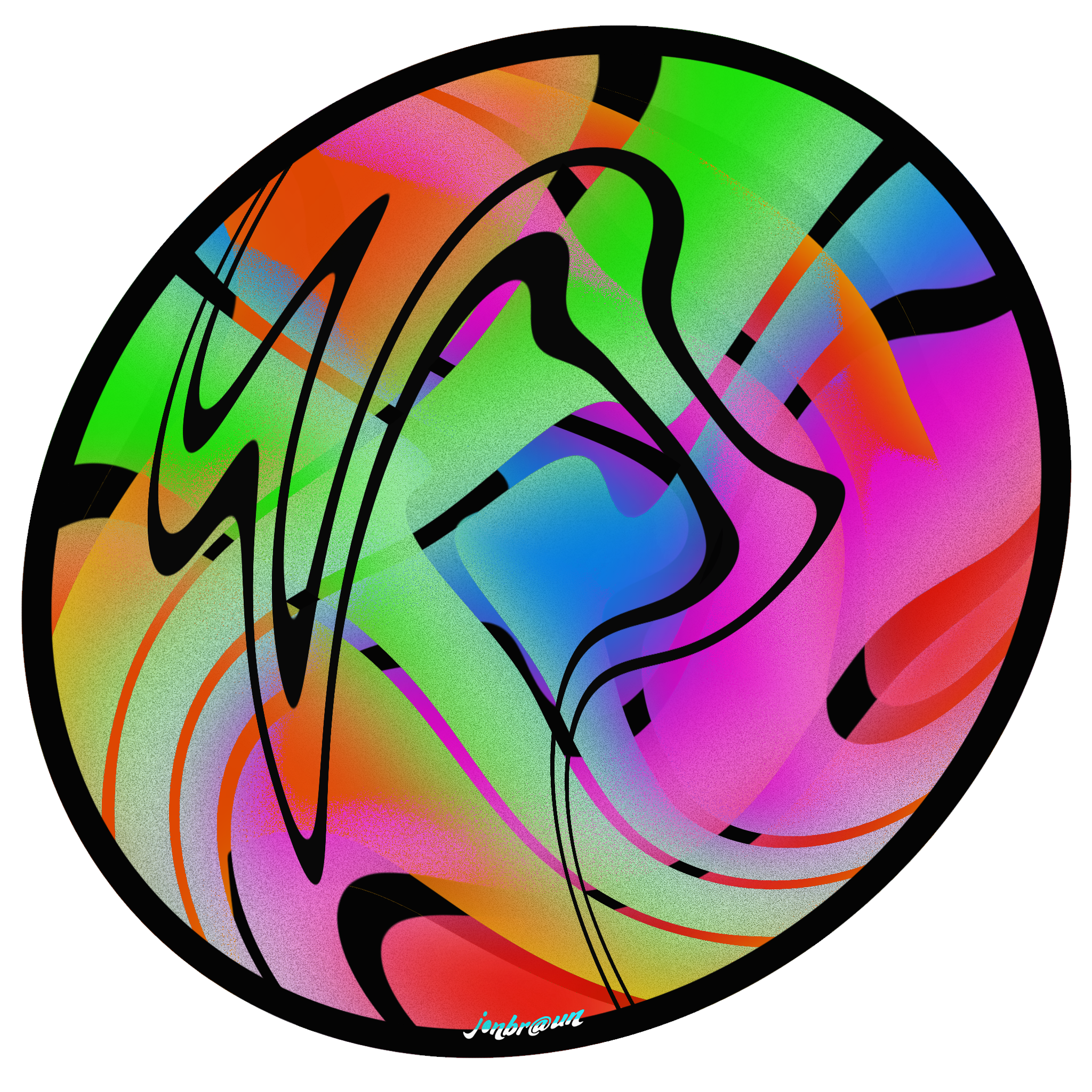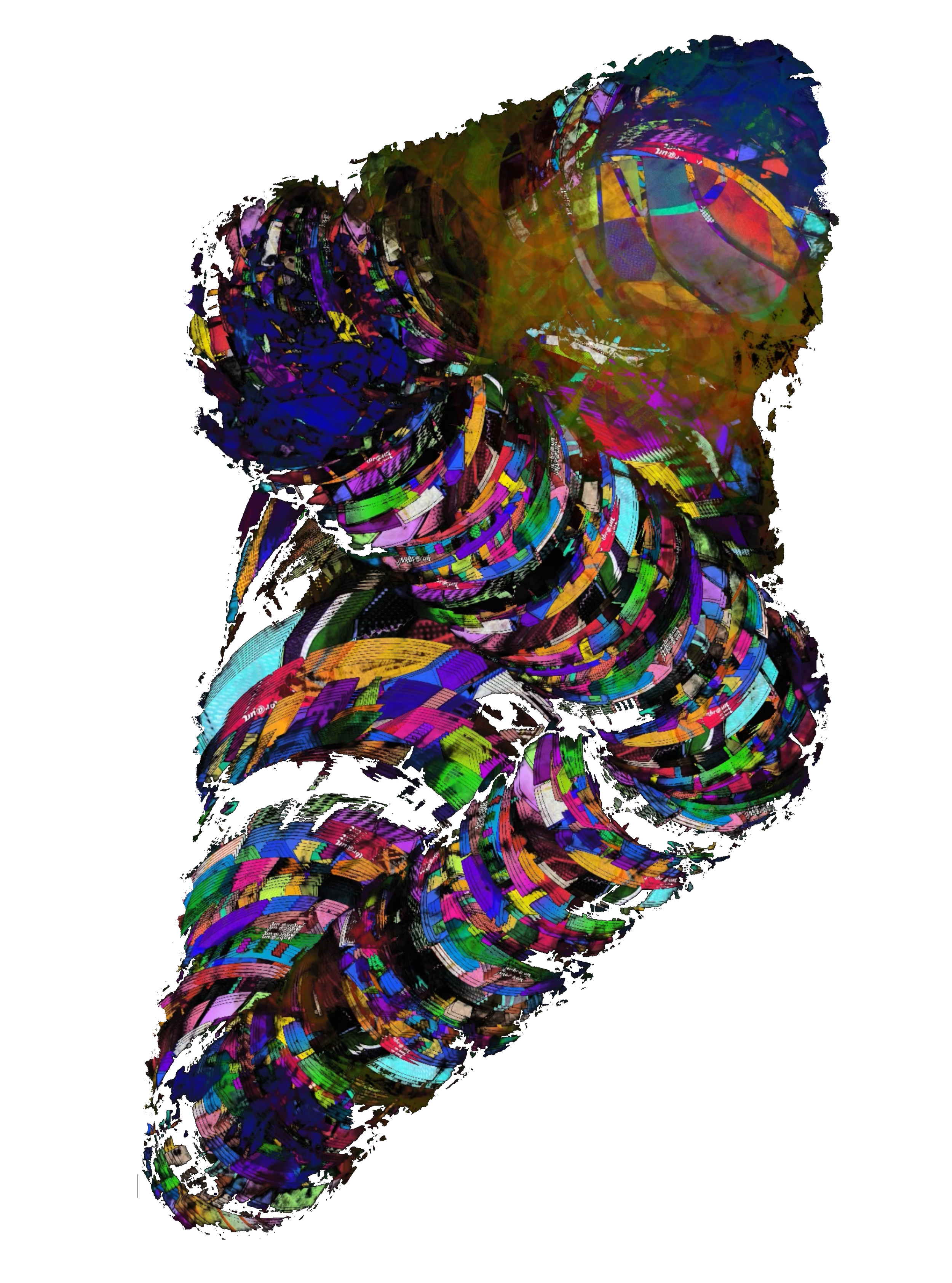PORTALS
The Rift (11.12.23)
In late 2023, a series of scientific experiments led to the accidental discovery of several small portals. While research continues on these anomalies, each have been logged and illustrated as part of the longitudinal study.
The Rift (12.15.23)
PORTAL 57
Geometry: The portal appears as a two-dimensional circular frame, filled with various curved and straight lines intersecting at multiple points, creating a mosaic of distinct yet interconnected segments.
Coloration: The shapes within are colored with a vibrant and diverse palette, ranging from deep blues and purples to bright yellows and reds, suggesting the use of a visual spectrum outside the conventional range.
Texture: Certain areas within the anomaly display a textured appearance, akin to granular materials or coarse surfaces, which may indicate layered dimensions or the presence of particulate matter.
Composition: Preliminary analysis suggests a non-Newtonian construct, possibly a visual representation of higher-dimensional interaction.
Border: The portal is encompassed by a black border, providing a stark contrast to the vivid colors within, which may function as a containment field or boundary between dimensions.
Light Refraction: Anomalous refraction patterns suggest the presence of an unknown energy field within the portal structure.
Spatial Distortions: The overlapping lines and shapes hint at potential spatial distortions or warping of the fabric of space within the frame of the portal.
Portal 330
Sections appear opaque, potentially representing different states of portal activity or control zones.
Geometry: Composed of curved and intersecting lines that form a lattice-like structure across the surface.
Coloration: A diverse array of colors, ranging from warm to cool tones, applied with varying intensity and gradation.
Texture: A mixture of dotted patterns, stippling, and smooth areas, suggesting a complex interplay of multiple layers or dimensions.
Composition: The elements are intricately woven together, creating a dense network that could indicate a multifaceted portal interface.
Border: Surrounded by a dark, possibly absorptive border, which might function to delineate the portal from its surrounding environment.
Light Refraction: The way light seems to blend and bend among the colors and patterns indicates an alteration of typical refraction laws, possibly due to the portal’s unique properties.
Spatial Distortions: The overlapping and swirling lines create an illusion of depth and movement, hinting at a dynamic spatial rearrangement within the portal’s field.
Portal 83
Aspects have a pixelated appearance, which might hint at a digital interface or the portal functioning as a gateway to a virtual or augmented reality.
Geometry: This portal exhibits a spiraling design with overlapping bands, creating a sense of rotational motion.
Coloration: Features a diverse and vivid color palette with segments displaying a speckled pattern, adding to the visual complexity.
Texture: Contains a mix of dotted textures and smooth areas, suggesting a composite of various materials or energy states within the portal.
Composition: The intertwining bands and speckled dots give the impression of a digital or artificially constructed portal, with a possible cybernetic or holographic nature.
Border: A solid, dark boundary encircles the portal, possibly indicating a stabilization field that contains the portal's energies.
Light Refraction: Light appears to be emitted from within the portal itself, casting highlights on the surrounding bands and creating a glowing effect.
Spatial Distortions: The spiral design and the way the colors shift across the bands suggest the portal may be actively manipulating space within its bounds.
Portal 42
Portions of the image are missing, potentially suggesting either damage to the portal or a cloaking effect.
Geometry: Circular configuration with concentric ring patterns and segmented bands, suggesting a vortex-like structure.
Coloration: Rich and dark tones interspersed with vivid hues, creating a sense of depth and rotational motion.
Texture: Appears smooth with sporadic rough patches, hinting at variable surface properties or dimensional inconsistencies.
Composition: Possibly a dynamic entity with fluid-like characteristics, given the swirling patterns and seamless blending of forms.
Border: Thick, black rim partially obscured in places, which could indicate interaction or interference with adjacent matter or energy.
Light Refraction: Diminished, which might imply absorption of light or an internal light source not visible from this angle.
Spatial Distortions: The spiraling forms suggest rotational movement, potentially indicative of a gravitational pull or warping effect within the portal's core.
Portal 66
The subdued colors and complex geometry give the impression of an ancient or long-standing portal, possibly in a dormant state.
Geometry: An intricate network of undulating lines creates an interwoven tapestry-like structure.
Coloration: A palette of muted earth tones—browns, beiges, and greys— punctuated by occasional deep reds and blues.
Texture: The colors have a grainy, textured quality, reminiscent of natural stone or aged parchment.
Composition: The overlay of lines upon textured color blocks suggests depth and a three-dimensional aspect to the portal's construction.
Border: Encircled by a thick, dark rim, which may serve as a boundary or a stabilizing framework for the portal.
Light Refraction: The absence of bright or reflective colors suggests minimal light refraction, which may indicate the portal is not currently active.
Spatial Distortions: The flowing lines create a subtle sense of movement and depth, implying a potential for spatial manipulation should the portal become active.
Portal 19c
The simplicity of shapes and the clarity of colors give an impression of a schematic or symbolic representation, perhaps a simplified user interface.
Geometry: Features broad, sweeping curves intersecting at sharp angles, creating a sense of layered motion.
Coloration: Dominated by bold primary colors with clearly defined boundaries, suggesting distinct energetic frequencies or dimensions.
Texture: The surface appears uniformly smooth, indicating a possible single- phase material or energy construct.
Composition: The clear, strong lines and untextured color fields imply a stable and controlled formation, possibly engineered or maintained by advanced technology.
Border: Enclosed by a stark, black border that sharply delineates the portal from its surroundings, which may act as an isolation barrier.
Light Refraction: There is minimal evidence of light refraction at the color boundaries, indicating a potential absence of a physical medium within the portal's structure.
Spatial Distortions: The overlapping curves suggest a layered effect, with potential for multidimensional pathways within the portal’s architecture.
Portal 22b
Some areas within the shapes are filled with a dense dot matrix, which may indicate a digital or quantized aspect of the portal.
Geometry: A web of curvilinear shapes that ebb and flow in a rhythmic pattern, evoking the feeling of organic movement.
Coloration: A lively spectrum of colors, ranging from warm yellows and oranges to cool blues and purples, interspersed with pops of neon.
Texture: The image features a combination of stippled textures and smoother gradients, creating a tactile diversity.
Composition: Arranged in a seemingly random yet harmonious fashion, the shapes and colors suggest a complex, possibly mutable structure.
Border: A thick, black border frames the portal, providing a stark contrast to the vibrant interior and perhaps containing the anomaly's energies.
Light Refraction: The varied textures and the brightness of colors imply an intense interaction with light, perhaps manipulating or generating it.
Spatial Distortions: The swirling patterns and the layering of shapes give a sense of depth and motion, hinting at the distortion of space around the portal.
Portal 74
The absence of symmetrical patterns and the randomness of the shapes suggest that the portal may have adaptive or chaotic properties.
Geometry: An intricate web of flowing lines and curved shapes, suggesting fluid motion and organic irregularity.
Coloration: A kaleidoscope of bright, neon-like colors juxtaposed against deep shadows, conveying a sense of vibrant energy.
Texture: Smooth transitions between colors with occasional grainy textures, implying a mix of different physical or energetic states.
Composition: The blending of shapes and hues gives the impression of a dynamic, possibly unstable or shifting structure.
Border: Predominantly dark with intermittent bright accents, which may denote the portal's fluctuating boundary or interface with our dimension.
Light Refraction: Colors seem to be internally illuminated, hinting at intrinsic light sources or energy emissions from the portal.
Spatial Distortions: The curving lines and irregular shapes could be distorting the space around them, indicating a strong warping effect, possibly a sign of an active portal with ongoing transportative function.
Portal 29
Elements appear to be superimposed, possibly indicating an additional layer of energy or control mechanism.
Geometry: Fluid and irregular lines weave through the space, creating an abstract and dynamic form.
Coloration: A soft, pastel color scheme with gradients that flow into each other, punctuated by bold, black strokes.
Texture: The interplay of colors suggests a silky or velvety texture, interspersed with sleek, ink-like lines.
Composition: The configuration of elements is organic and free-flowing, reminiscent of natural patterns or artistic brush strokes.
Border: A deep black border frames the image, perhaps serving to contain the portal's energies or limit its influence.
Light Refraction: The gradient effects within the colors imply a gentle bending of light, which could signify a subtle manipulation of photons.
Spatial Distortions: The absence of any fixed shapes or symmetry suggests that this portal might affect its surroundings in unpredictable ways, potentially altering perceptions of space and form.
The Rift
This anomaly has been documented several times, each instance revealing new aspects of its ever-changing blend of light and color. The portals seem to encompass individual elements of the pathway formed by what is referred to in this documentation as ‘The Rift.”
It appears to be a collection of the aforementioned portals as they move through space and time. It is unclear as to where this collection of pathways leads or if returning from travel would be possible. The ever changing nature of the anomaly prompts this division to suggest resistance and advises continued documentation of this matter.
I spend a lot of time thinking about the past. In an effort to be more present, I took on a drawing challenge of restricting myself to a particular design structure. Each image would be a circle and within that circle would be intersecting layers of lines; as well as colors that would alter the way each viewer could interpret the final image.
Portals has been a fun experiment of reflecting on my memories and turning them into visual spots in time. Taking each moment and feeling through how it reflects back at the adult version of myself was a powerful way to see through time. Some of those moments are positive and some of them aren’t, but they all play a part in making me who I am.
After creating the individual illustrations in Procreate, I started playing with them in a video editor. I created quick cuts between each image, manipulating each portal to spin around the screen. In one animation, I had them bouncing around like one of those DVD screensavers…and that’s when I first saw the Rift. I don’t know much about making art, but I do know how important it is to me. This project is assuredly the most personal thing I’ve done and I think there are ways for all of us to find reflections of our past in the portals.

